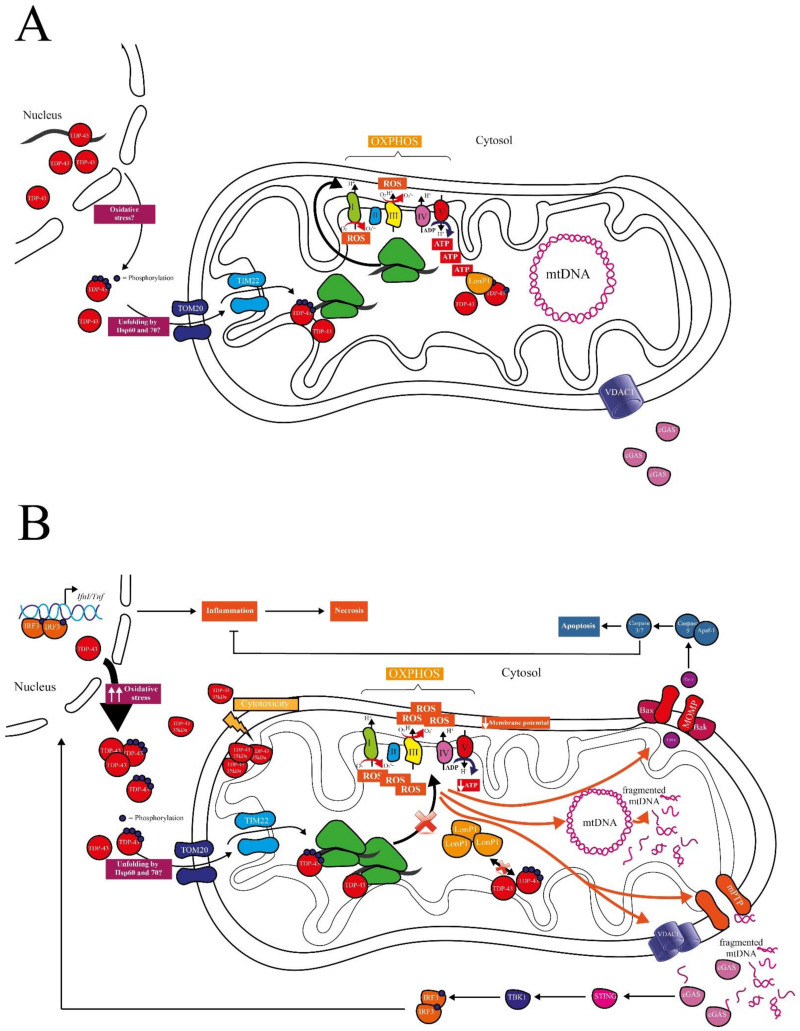Figure 1.
Potential physiological and pathophysiological roles of TDP-43 in mitochondrial function and cell death. (A) Physiological roles: Oxidative stress triggers the export of nuclear TDP-43 into the cytosol. Exported and newly synthesized cytosolic TDP-43 might be phosphorylated. Upon unfolding by Hsp60 or Hsp70, phosphorylated and unphosphorylated TDP-43 might be imported into mitochondria through TOM20 and TIM22. TDP-43 localizes in the matrix-facing part of the mitochondrial inner membrane (MIM), where it might regulate expression of OXPHOS components. Surplus, misfolded, or aberrantly post-translationally modified TDP-43 might also be imported from the cytosol into mitochondria for its degradation by LonP1, protecting the cytosol from aggregation-prone proteins. (B) Pathophysiological roles: Chronically increased oxidative stress (two arrows tending upwards) increases nuclear depletion and cytosolic accumulation of TDP-43 followed by its import into mitochondria. The truncated 35 kDa form is also imported in the mitochondria but is stuck in the intermembrane space and its cytotoxicity is not related to mt-RNA binding. Elevated TDP-43 levels in the mitochondria increases TDP-43-binding on mt-mRNAs of several OXPHOS components, affect the mitochondrial respiratory chain (red diagonal cross), leading to lower ATP production, decreased mitochondrial membrane potential, and increased ROS. Decreased ATP hinders TDP-43 degradation in the mitochondria via LonP1 (red diagonal cross). Mitochondrial dysfunction leads to the opening of mPTP and oligomerization of VDAC1, and consequently, fragmented mtDNA is released in the cytosol and sensed by cGAS. cGAS binds to mtDNA and activates STING, which triggers the expression of proinflammatory genes through the IFN pathway, culminating in necrotic cell death. Alternatively, cell death may be caused through the canonical intrinsic apoptosis pathway. Here cytochrome c is released from mitochondria in a MOMP- and Bax-dependent manner to activate caspase-9 and the caspase cascade. This includes caspases-3/7, which attenuate inflammation (bar-headed arrow). IFN: interferon; LonP1: Lon protease; MOMP: mitochondrial outer membrane permeabilization; mPTP: mitochondrial permeability transition pore; OXPHOS: oxidative phosphorylation.

